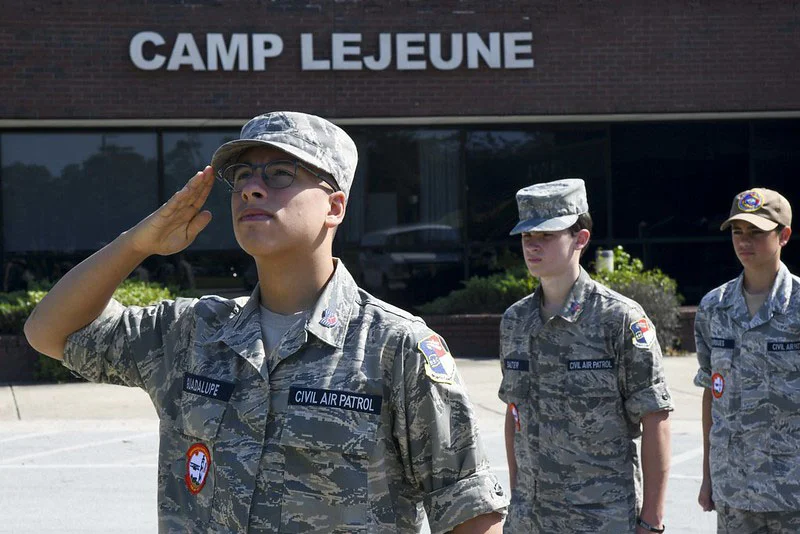Types of Burn Injuries
Burn injuries range from mild sunburns to the destruction of skin, muscles, nerves, and even bones. These injuries can cause substantial pain and suffering; severe burns can cause scarring, loss of use, illness, infection, and many other kinds of permanent impairment.
Talk to an experienced Detroit burn injury lawyer if you’ve suffered a burn injury. The attorneys at Sommers Schwartz, P.C. can help you understand your legal rights and pursue the compensation you deserve.
While most burn injuries happen at home, workers in certain industries, including food service, welding, and firefighting, also face a higher risk of workplace burn injuries. While anyone can suffer a burn injury, babies and elderly adults are at a higher risk of harm.
Types of Burn Injuries
Burn injuries happen when excessive energy damages the body’s skin and tissue cells. Heat sources are the most common source of burn injuries but are not the only source. Exposure to chemicals, electrical discharges, radiation, and friction can also cause burns.
Thermal Burns
Thermal burns are also known as heat burns. A thermal burn occurs when the skin’s temperature rises from exposure to a heat source. When the heat rises too high, skin cells die. In extreme cases, the skin cells may even burn.
Thermal burns can be caused by nearly any heat source. Familiar sources of thermal burns include:
- Hot stovetops, hot plates, toasters, and other cooking appliances.
- Boiling liquids and steam.
- Open flames and actively burning items like cigarettes or incense.
- Heated home appliances and tools, like curling irons, space heaters, and heating pads.
- Radiators.
- Overheating batteries, especially lithium-ion batteries.
- Dangerously hot tap water.
Any heat source that contacts the skin can cause thermal burns. Many burns can be prevented by taking measures like testing bath water before bathing children or elderly persons, keeping your water heater at a safe temperature, and ensuring appliances are unplugged when not in use. However, sometimes appliances malfunction or are poorly designed.
Chemical Burns
Chemical burns occur when a strong chemical comes into contact with the skin or eyes, causing cell damage. Chemicals in solid, liquid, or gas forms can all cause chemical burns.
Many household and workplace products can cause chemical burns if improperly handled. Common sources of chemical burns include:
- Cleaning products like ammonia, bleach, and toilet and drain cleaners.
- Car battery acid.
- Swimming pool chemicals.
- Fertilizers.
- Concrete mixes.
- Paint thinners.
Like thermal burns, many chemical burns can be prevented. Manufacturers must place warnings on products that could cause chemical burns in adults and children. Employers must make manufacturer safety data sheets (MSDS) available to workers who use chemicals that may cause burns and provide appropriate safety protection.
Radiation Burns
Radiation is a form of energy. Heat, such as that given off by a stove burner, is a low-wavelength form called infrared radiation. At higher wavelengths, radiation can do serious damage and cause severe burn injuries.
The most commonly known type of radiation burn is sunburn. Sunburns are caused by exposure to ultraviolet light produced by the sun. Other sources of radiation burns include:
- Improperly managed radiation therapy.
- Exposure to high-frequency microwaves or radio waves, often from sources with defective shielding.
- Nuclear energy.
Because radiation can cause severe burns, many federal and state regulations govern how someone can use radiation and what warnings they must provide to workers and the general public. When these regulations are ignored, serious harm can result.
Friction Burns
Friction is resistance that happens when one surface or object rubs against another. When friction is low, surfaces slide easily against each other, like a sled down a snowy hill. When friction is high, surfaces grip or pull at each other, like sandpaper over rough wood. Friction applied to the skin can cause a friction burn.
Often, friction burns are named for their source. For example, a burn caused by a rope sliding through someone’s hands can be called a “rope burn.” A “road burn” occurs when a person’s body slides forcefully along a concrete surface and abrades the skin.
Electrical Burns
Exposure to an electrical current can cause electrical burns. Because electrical currents can also disrupt other internal organs and body functions, electrical burns pose an especially high risk of injury or death.
There are six main types of electrical burns:
- Arc burns occur when an electrical arc “jumps” from its source to a human body. Arc burns range from low-intensity flash burns to severe or even deadly burns.
- Flame burns occur when the electrical source catches fire, causing a thermal burn. Flame burns often appear in addition to other types of electrical burns.
- Flash burns are a type of arc burn. Flash burns typically damage the skin but do not disrupt other body systems.
- High-voltage burns come from a high-voltage power source, usually over 500 volts. Electrical current courses through the body at high voltage, burning internal tissues and the skin.
- Low-voltage burns occur when a power source provides 500 volts or less. These burns often injure the skin but rarely damage underlying muscles, organs, or bones.
- Oral burns happen when an electrical source enters through the mouth. These burns are common in children who have bitten an electrical cord.
In addition to an electrical burn, an electrical source may cause other types of burns. For example, a faulty electrical cord may cause an electrical burn when touched and cause thermal burns by setting flammable material on fire. Lightning can cause electrical burns directly and also ignite wildfires.
Degrees of a Burn Injury
Medical professionals classify burn injuries according to their degree. First-degree burns are the least severe, while fourth-degree burns are the most severe.
First-degree burns: A first-degree burn affects only the top layer of skin. The skin is red, mildly swollen, painful, or peeling but doesn’t develop blisters. A mild sunburn usually falls into this category.
Second-degree burns: A second-degree burn affects the top layer of skin and at least one layer underneath. Blisters appear on the skin, which may appear thicker at the burn site. These burns are often quite painful. Proper wound care is necessary to ensure the skin heals without developing an infection. Some severe sunburns, scalding burns, and cooking burns are second-degree burns.
Third-degree burns: Third-degree burns damage every layer of the skin. The skin is visibly thicker and leathery at the burn site. It may turn white or waxy or have a dark, charred color. Often, a third-degree burn causes little pain at the burn site because the nerves are completely destroyed. However, the surrounding tissue may be extremely painful.
Fourth-degree burns: A fourth-degree burn is a third-degree burn with deeper damage. In a fourth-degree burn, burn damage appears in the tendons, muscles, or bones, as well as the skin. Third- and fourth-degree burns have a very high risk of complications, including infections, shock, and problems regulating body temperature.
Any burn injury can benefit from medical attention. Even a first-degree burn should be examined by a doctor if it is large, on the face, or covers a body area that is frequently in motion (like a joint). Medical care is crucial for severe burns. Without proper medical care, a third- or fourth-degree burn or its complications could cause permanent impairment or even death.
What To Do After Sustaining a Burn Injury in a Detroit Accident
The first step in any burn injury is to seek medical treatment. After the injured person receives medical care, they and their family can begin to consider seeking legal assistance.
About 75 percent of all burn injuries are preventable. If you or someone you love has suffered a burn injury, seeking legal help is essential.
An experienced burn injury lawyer can help you:
- Determine whether the burn was preventable and whether another person or party negligently failed to prevent it.
- Understand how the law applies to your case.
- Chart a course to secure compensation and hold negligent parties accountable for their actions.
At Sommers Schwartz, our legal team has helped many burn injury survivors. We understand how devastating burn injuries can be. Contact us for a free and confidential consultation. We’ll help you understand your options and provide support for you and your loved ones.
We fight hard. And we win.
News & Case Alerts
Read related articles and learn about recently filed cases.
Kind Remarks About Our Professionalism
What a great law firm! While they were not able to help me in particular, Matt Turner went above and beyond to do his best. My statute of limitations ended in two weeks, and he dropped everything to see if he could help me. After a professional review and conversation…
Praise for Jesse Young and Alana Karbal
Alana Karbal and Jesse Young did an excellent job fighting a giant for my wages. They pushed me to get what they needed from me and were amazing at communicating with me at all times. I won my arbitration and was so excited when I got more than what I…
A Satisfied Client
Alana, thank you for your work on my case. Your communication and fight for my rights were amazing!
A Client’s Gratitude
Thank you, Andy Dragovic and Annette DeCoste, for your professionalism and dedication to me and my malpractice claim. Andy’s confident and caring personality assured me that I chose the right firm to help me fight and get through one of the most difficult times of my life.
A Client With a Wrongful Death Case
My family and I would like to thank Matt Turner, Mickey McCullough, Janice Koehler, and your entire law firm for your dedication to my wife’s wrongful death case. We realize that we had the best law firm to successfully help us. We appreciate the obviously hard work and the efforts…
Praise for Albert Asciutto
Shout out to Albert Asciutto for being a fantastic attorney & walking me through the entire process of fighting for my wages! He made the process quick and easy. In the end we won the case!! Thank you again for taking my case on, you are awesome! I would absolutely…
Praise for Wage & Overtime Pay Attorney Jesse Young
Jesse Young worked an employment case for me that ended with almost 700 people getting their unpaid wages back. He and his team are incredible. From the first communication to the last, they never missed a single beat – consistent and clear communication, quickly replying to my communication, and always making…
A Client’s Gratitude for Tad Roumayah
Tad, I want to express my sincere gratitude for your unrelenting advocacy on my behalf throughout this process. It’s a shame that this sort of thing is still happening to new moms in 2023 and at an institution that prides itself on diversity, equity, and inclusion, no less. Knowing there…
Our Clients Say It Best



